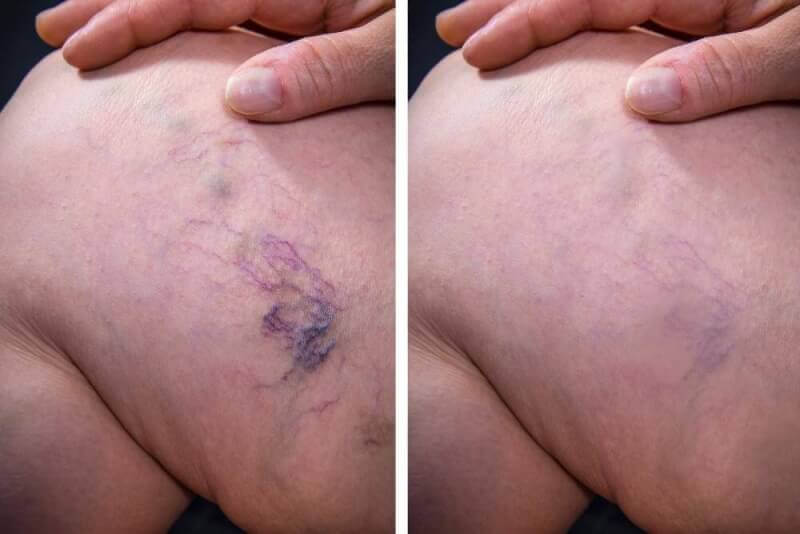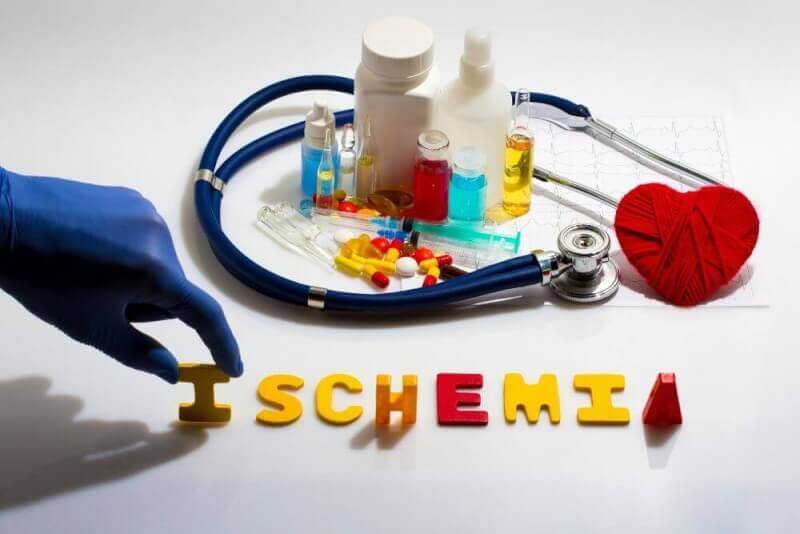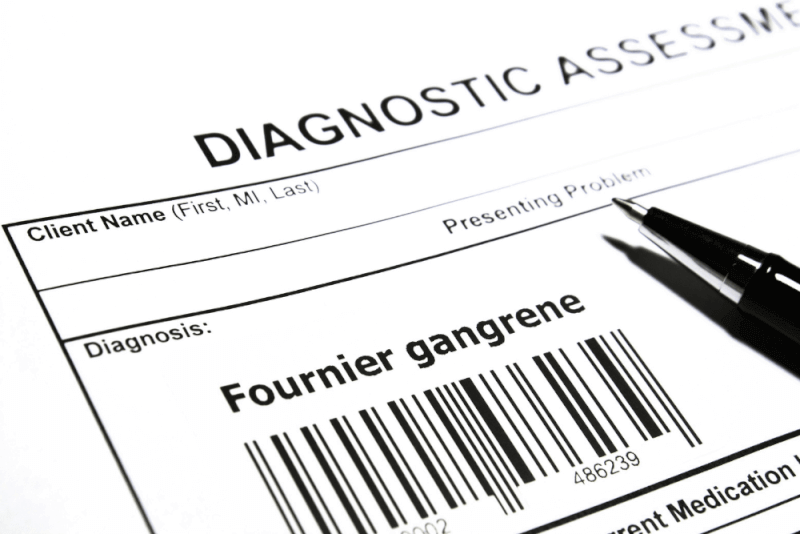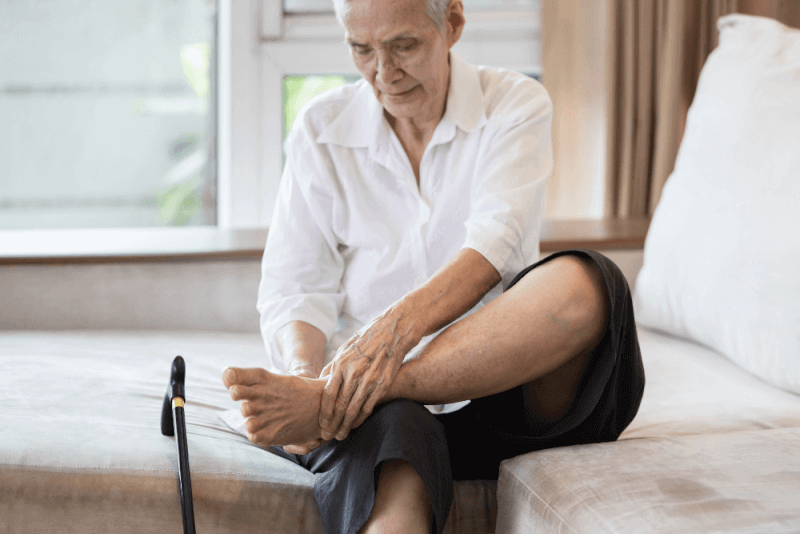What is Varicose Veins?
Varicose veins is a disease that usually occurs in the leg and is caused by swelling of the veins. Veins carry blood from the heart to other parts of the body. For this reason, the veins contract and allow blood to flow towards the heart. However, in case of varicose veins, the inner walls of the veins are weakened and enlarged. This causes blood to pool in the legs and causes vein swelling called varicose veins.
Varicose veins occur when the veins, which usually appear purple, blue or red in color, become prominent. Colored veins on the legs mean that blood circulation is not taking place properly. Moreover, pain, swelling, burning and itching in the legs are frequently observed in varicose veins.
Varicose veins are one of the leading complications affecting quality of life today. However, it is also possible to control varicose veins with early diagnosis and appropriate treatment methods.
Varicose Veins
Varicose veins are generally known as enlarged veins that occur in the legs and feet. However, varicose veins may vary according to the size and location of the veins. Here are the types of varicose veins seen in the publication:
Superficial Varicose Veins
Superficial varicose veins are veins that occur close to the skin. They usually appear blue or purple in color and arouse aesthetic concerns in people.
Nutritional Varicose Veins
Nutritional varicose veins are located deeper in the lower areas of the skin. These varicose veins are the lower branches of the veins that carry blood to the venous system. For this reason, they can sometimes cause more serious symptoms than superficial varicose veins.
Esophageal Varices
Esophageal varices occur in the veins located in the esophagus. They are associated with problems such as liver disease and can cause serious complications. These varicose veins require urgent medical intervention.
Hemorrhoids
Hemorrhoids are caused by dilated veins around the anus or rectum. These varicose veins can also cause changes in bowel movements and symptoms such as bleeding from the anus.
Capillary Varicose Veins
Capillary varicose veins are very close to the skin surface. These varicose veins present themselves with the problem of enlargement of the thin and small veins. Capillary varicose veins, which cause aesthetic concerns in people, are usually red, purple or blue in color. In addition, capillary varicose veins can be seen on the legs, face, nose, cheeks and feet.
Causes of Capillary Varicose Veins
Capillary varicose veins are varicose veins that occur in veins that are smaller and very close to the skin. These varicose veins, which psychologically harm people, can occur for various reasons. Here are the factors that cause capillary formation:
Hormonal Changes
Changes in hormones such as estrogen over time play an effective role in the formation of capillary varicose veins. For this reason, capillary formation is common in people who use pregnancy, birth control or hormone pills.
Aging
Aging leads to changes in the connective tissue close to the skin and weakening of the vessel walls. This will also predispose to capillary varicose veins.
Prolonged Exposure to the Sun's Rays
Sun rays can often disrupt the collagen structure in the skin. Therefore, staying in the sun for a long time will cause dilated capillaries.
Reticular Varicose Veins
Reticular varicose veins are veins that occur close to the skin surface and are usually blue or green in color. These vessels can swell because the direction of blood flow is reversed. In this case, varicose veins in the legs are generally encountered. Reticular varicose veins also cause aesthetic problems like other harmless types of varicose veins. However, in some severe cases, mild discomfort and itching problems can also be observed.
Causes of Reticular Varicose Veins
Reticular varicose veins, like other types of varicose veins, are caused by problems with blood flow. These varicose veins, which are larger than capillary varicose veins but smaller than superficial varicose veins, present themselves with mild symptoms. Therefore, the causes of reticular varicose veins are genetic predisposition, hormonal changes, aging, prolonged standing, obesity and sun exposure, which are other causes of varicose veins.
Large Vein Varicose Veins
Large vein varicose veins are enlargements that occur in the deep veins. These varicose veins, which usually occur in the leg area, are caused by the collection of blood flow at different points. It is considered a more serious condition than capillary and reticular varices. For this reason, medical interventions may be preferred for large vein varicose veins.
Causes of Large Vein Varicose Veins
Large vein varicose veins occur as a result of insufficiency of the large veins in the legs, called saphenous veins. They are quite puffy and greenish in appearance. The factors that can be listed as the causes of large vein varicose veins are as follows:
- Vascular injuries or diseases that trigger varicose veins
- Clot formation in the vessel
- Overweight
- Hormonal changes
- Advanced age
Varicose Veins Diagnosis Methods
Today, a number of methods and test applications have been developed to diagnose varicose veins. These methods are listed as follows:
Physical Examination
Varicose veins are usually visible during a medical examination. Significant swelling and curved veins on the legs will be sufficient for the detection of varicose veins.
Doppler Ultrasound
Doppler ultrasound, which is used extensively in hospitals, is used to measure the location and severity of varicose veins. Doppler ultrasound can also provide doctors with detailed information about the vessels and valves.
Color Doppler Ultrasonography
Color Doppler ultrasonography is a varicose vein diagnosis method developed to examine the structure of the veins in more detail. This method provides color images of varicose veins based on the speed and direction of blood flow and the structure of the veins. In this way, the size, depth and complication status of the varix can be easily examined.
Venographic Imaging
Venographic imaging provides a diagnosis by injecting a contrast medium into the blood and examining the veins using X-rays. The method is preferred for advanced cases of varicose veins.
Varicose Veins Symptoms
Varicose veins make themselves known in the leg area over time. Symptoms frequently seen in people with varicose veins are as follows:
Swollen and Colored Veins
The varicose veins can manifest themselves in purple, blue or red. Moreover, these veins swell visibly on the surface of the skin.
Pain and Discomfort in the Legs
Varicose veins cause pain, discomfort, burning and cramping sensations in the legs. Moreover, the symptoms may be exacerbated by the duration of standing.
Swelling in the legs
Severe varicose veins can cause swelling in the leg area. Especially in patients with varicose veins, edema in the ankles is frequently observed.
Itching and Skin Changes
Another symptom of varicose veins is the appearance of conditions such as itching, redness, flaking and dermatitis on the skin.
Fatigue and Fatigue
Since varicose veins negatively affect the blood circulation in the legs, fatigue and weakness in the legs may also occur.
Causes of Varicose Veins
Varicose veins can occur due to many reasons. However, the most common conditions that affect the formation of varicose veins are the following:
Genetic Predisposition
Genetic factors change the structure of the vessels and affect the function of the valves. For this reason, individuals with a family history of varicose veins are at risk of developing varicose veins throughout their lifetime.
Vascular Attenuation
Structural weakening of the veins prepares the ground for varicose veins. In particular, the loss of the flexible structure of the vessel walls causes them to change shape and swell.
Problems with Vascular Valves
Vascular valves keep the blood moving along the line, preventing it from backing up. When this condition is not working properly, the blood in the veins flows backwards and the veins dilate.
Standing for Long Periods
Prolonged standing negatively affects venous circulation in the legs. This leads to blood pooling in the veins and directly to varicose veins.
Obesity and Overweight
Being over a certain weight always increases the pressure in the legs. Therefore, the circulation in the veins is adversely affected and varicose veins occur.
Varicose Veins Treatment Methods
Varicose vein treatment methods are determined according to the severity of the disease, symptoms and the patient's health status. However, varicose vein treatment methods used as a publication in Turkey can be listed as follows:
Endovenous Laser Ablation
During this procedure, laser energy is used and a catheter is inserted into the varicose vein. The laser closes the vessel wall, making it possible for healthier blood flow.
Venous Surgery
It is the preferred surgical intervention in advanced varicose veins. This method is performed by removing the varicose veins or repairing the surrounding tissues.
Compression Therapy
In this method, compression bandages are used and the blood flow in the veins can be regulated thanks to the pressure applied to the varicose veins. This reduces the symptoms of varicose veins and relieves swelling.
Sclerotherapy
This method is applied by injecting medication into the varicose veins. The medicines prevent the destruction of the vessel walls and allow the vessel to dilate.
Varicose Veins Surgery
Varicose vein surgery is a preferred method in advanced varicose vein formations. For surgical operations to take place, none of the other methods must be effective. These operations are performed by removing varicose veins or improving the surrounding tissues. The basic criteria to be known about varicose vein surgeries are as follows:
Phlebectomy
During this procedure, the varicose veins are removed through small incisions. This surgery, performed under local anesthesia, is effective in removing varicose veins that are prominent and reduce the quality of life.
Surgical Ligation
Ligation literally means ligation of blood vessels. In this procedure, an incision is made at both ends of the varicose veins and the vein is reconnected and closed. There is no need to remove the vessel.
Combined Phlebectomy and Surgical Ligation
In this procedure, both phlebectomy and surgical ligation are performed together. In this way, some of the varicose veins are removed and some are reconnected.









